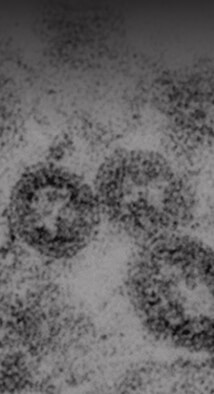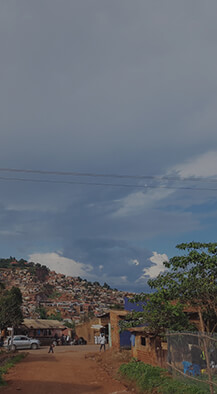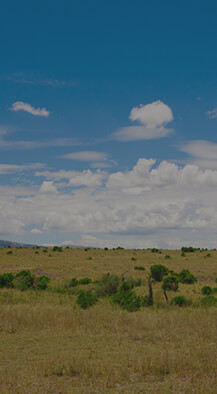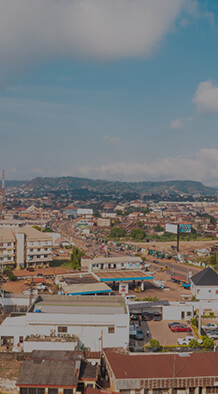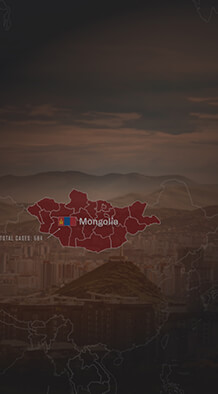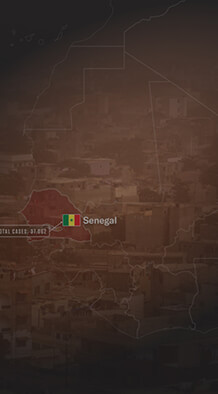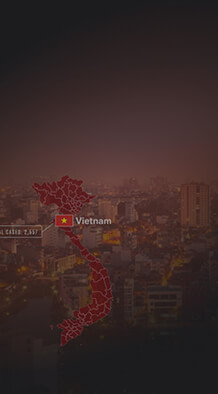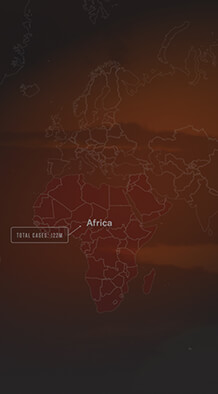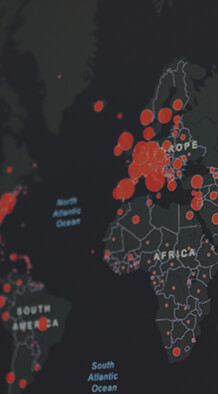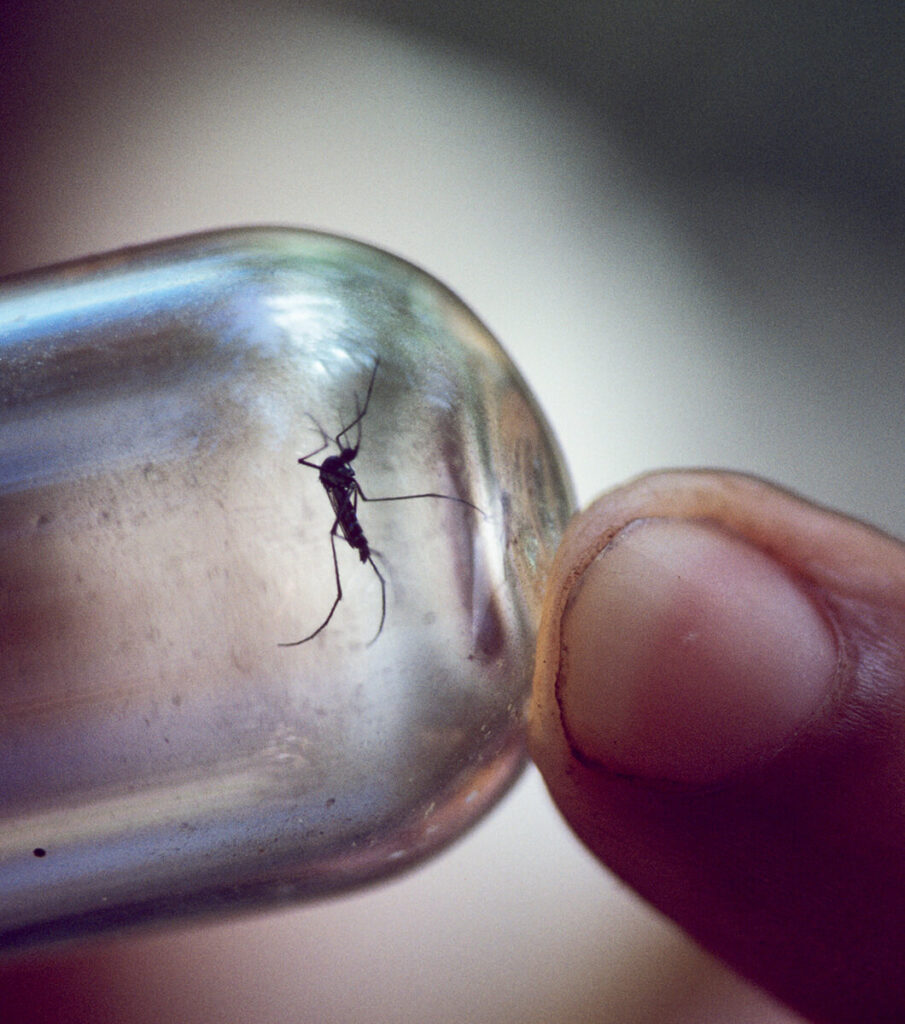Epidemics That Didn't Happen
Case Study:
Yellow Fever
in Brazil
ABOUT YELLOW FEVER
The yellow fever virus, which spreads between mosquitoes and primates (human and non-human), was brought to the Americas from Africa by the Atlantic slave trade. One of the earliest recorded outbreaks was in the mid-17th century in the Yucatan,1 and between 1693 and 1905 it killed more than 100,000 people in the United States.2 Outbreaks continue to occur in tropical areas of Africa and South America, where it cannot be fully eliminated as it circulates between mosquitoes and non-human primates indigenous to the forest. Brazil was able to eliminate urban yellow fever in 1942.
Learn more about the transmission cycle of yellow fever here.
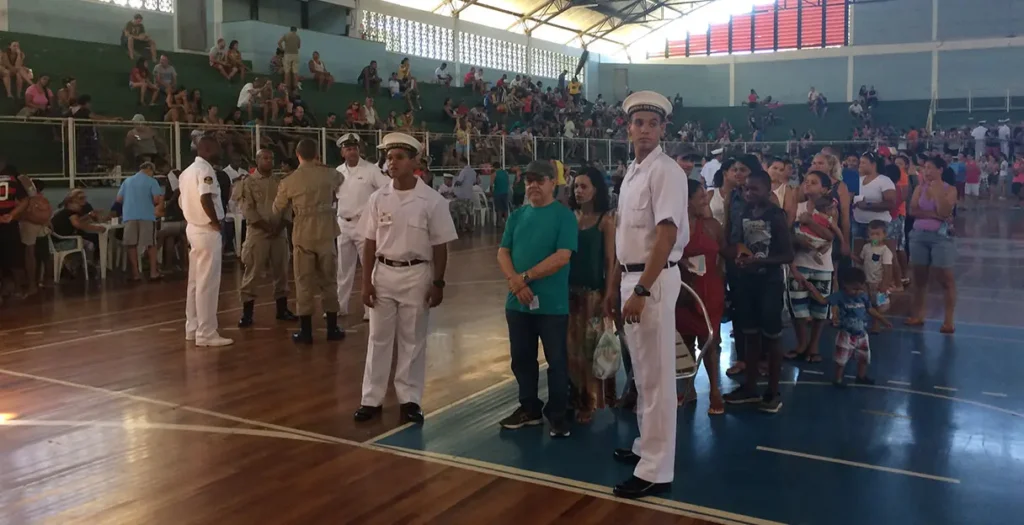
In humans, the disease typically begins with a fever, chills, headache, nausea, fatigue and weakness. But severe cases can enter a second “toxic phase” that causes jaundice, making eyes and skin appear yellow—the symptom that gives the disease its name—and sometimes liver and kidney failure, among other symptoms.3 There is no cure for yellow fever, and 30-60% of those with severe infections die.4 An effective vaccine was developed in the late 1930s;5 90% of those who receive the vaccine are immune within 10 days.6 In recent years, large yellow fever outbreaks have caused global supply shortages of the vaccine.7
There is no cure for yellow fever and 30-60% of those with severe infections die.

In Brazil, people living or working in or near the rainforest are most at risk for yellow fever infection. In recent years, environmental changes have led to higher circulation of the yellow fever virus among monkeys in forest ecosystems which, along with closer contact of humans and mosquitoes and changes in human behavior, led to an explosion of infections in nearby human populations. The greater number of cases—including both animal and human outbreaks—allowed the rapid spread of disease into forest areas near large Brazilian cities, including Rio de Janeiro and São Paulo, where yellow fever vaccination coverage is low due to the disease’s long absence.8
WHAT HAPPENED
Prior to 2016, there were relatively few cases of yellow fever in Brazil—the 2015/2016 yellow fever season had only three confirmed human cases and two deaths. But in December 2016, it became clear to epidemiologists monitoring yellow fever in southeast Brazil that an epidemic was imminent. The largest outbreak of yellow fever in Brazil in modern times was emerging,9 just as the global yellow fever vaccine supply was running dangerously low.
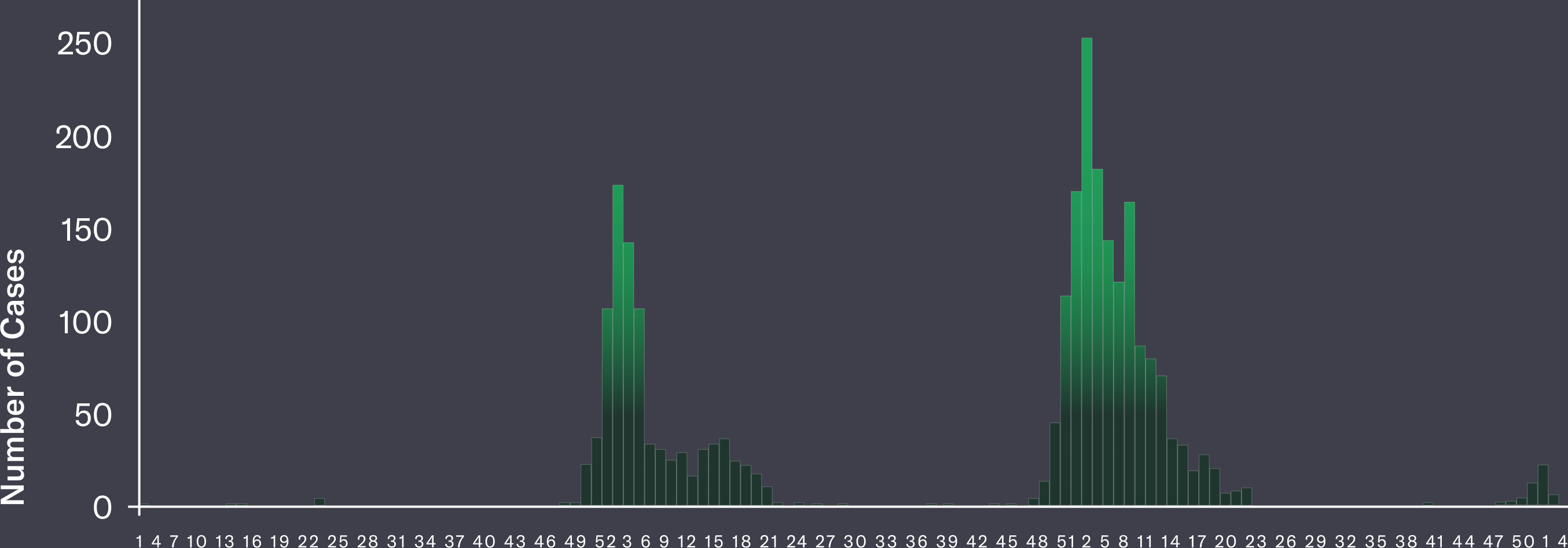
Epidemiological Week
Source: Data published by the Brazil Ministry of Health (2016-2018, as of EW50) and the Sao Paulo State Secretariat of Health (EW 51 of 2018 to EW 9 of 2019) and reproduced by PAHO/WHO
During the 2016-2017 season, cases climbed to 792, with 274 deaths. In the December 2017-May 2018 season, cases and deaths continued to rise, with 1,266 new human cases, and 415 deaths.10 Infections were concentrated in areas surrounding major cities that were not typically considered high risk for yellow fever; officials feared that transmission could explode if the disease started to spread between humans and urban mosquito species.11
Also worrying to the international community was the spread of yellow fever beyond Brazil’s borders. From January to March of 2018, the US Centers for Disease Control and Prevention (CDC) reported at least four deaths and 10 cases among international travelers returning to Europe and South America from Brazil.12 Fear of a broader outbreak loomed.
The US CDC reported at least four deaths and 10 cases among international travelers returning to Europe and South America from Brazil.
Key Preparedness Factors
-
Risk Assessment & Planning
-
Emergency Response Operations
-
National Laboratory System
-
Disease Surveillance
-
National Legislation Policy & Financing
-
Human Resources
-
Risk Communications
THE RESPONSE
Controlling the 2016-2018 outbreak required Brazil to significantly expand immunization as infections crept toward major cities. Brazil was well-positioned to do this: the country is one of the largest producers of the yellow fever vaccine in the world and has an integrated public health system that prioritizes routine vaccination, including yellow fever vaccine administered to young children. However, at the time of the outbreak, vaccine supplies were low; a yellow fever outbreak in Angola and DRC had depleted the Brazilian government’s stocks.13
Brazil developed an ambitious vaccination plan. Authorities drastically expanded yellow fever vaccinations in 2017, distributing 45 million vaccine doses and an additional 24 million in 2018,14 including in the highly populated states of São Paulo, Rio de Janeiro and Bahia. Eventually, to stay ahead of further spread of yellow fever cases, officials expanded yellow fever vaccination to the entire country, targeting an additional 77 million people.15
Brazil was uniquely able to respond to yellow fever, as it had developed scientific expertise on the endemic disease starting in the late 19th century and was a part of developing the yellow fever vaccine in the 1930s, motivated by national risk.16 As it was already one of the major producers of the vaccine, by 2018 it was able to double its monthly production to 8 million doses17 to support its ambitious goal to vaccinate the entire population.18
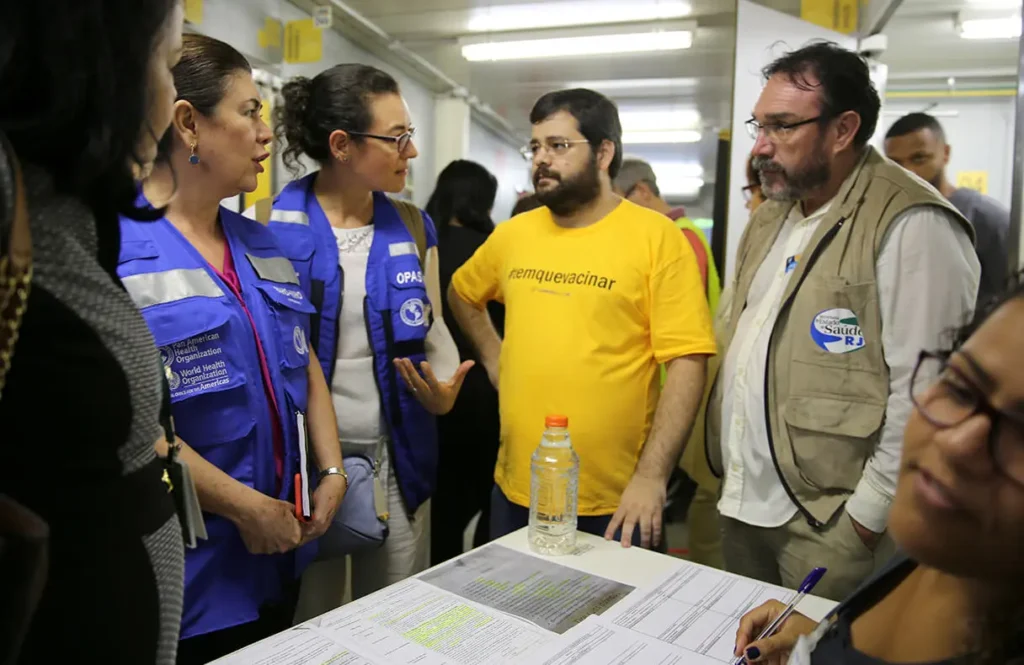

To manage the large number of vaccinations needed amid a vaccine shortage, officials requested additional supplies from an international stockpile to supplement their domestic production ability.19 To stretch supply further, in collaboration with the Pan American Health Organization (PAHO) and the World Health Organization (WHO), Brazil decided to use partial doses of vaccine. Studies show that one-fifth of a standard dose can provide up to one year of immunity and can be beneficial in containing outbreaks.
In conjunction with vaccination, health officials prioritized surveillance of yellow fever outbreaks among animals—providing advance warning of where human cases would later appear—case management to reduce deaths among those infected and highly specific testing diagnostics.
By the end of the 2019 yellow fever season, these measures had produced dramatic results: only 85 yellow fever cases and 15 deaths were reported. A disease that had threatened to expand throughout Brazil and across borders had been contained.
This case study was developed in partnership with the Pan American Health Organization.
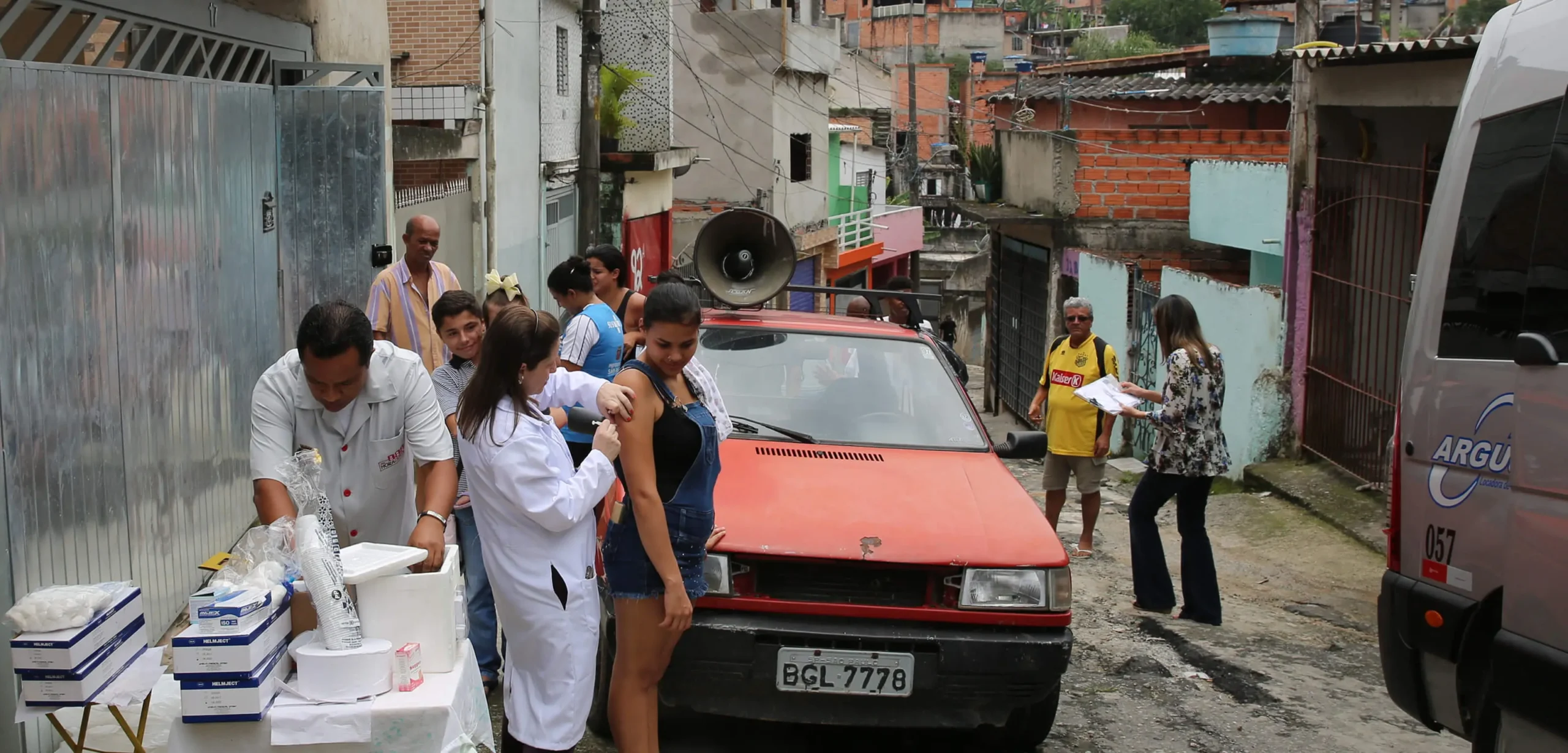
TIMELINE


Immunization is key; surveillance of epizootics allows you to anticipate cases in humans approximately one month in advance; it's essential to ensure updated knowledge of health care workers for better clinical management at primary health care level...20
Sylvain Aldighieri, PAHO Health Emergencies Deputy Director
References
- Staples, J. E. & Monath, T.P. (2008). Yellow Fever: 100 Years of Discovery. JAMA, 300(8), 960. https://jamanetwork.com/journals/jama/fullarticle/182442
- Moreno- Madriñán, M.J., and Turell, M. (2018). History of Mosquitoborne Diseases in the United States and Implications for New Pathogens. Emerging Infectious Diseases, 24(5), 821-826. https://www.ncbi.nlm.nih.gov/pmc/articles/PMC5938790/
- Mayo Clinic. (2020, September 22). Yellow fever -– Symptoms and causes. https://www.mayoclinic.org/diseases-conditions/yellow-fever/symptoms-causes/syc-20353045
- Centers for Disease Control and Prevention. (2019). Yellow Fever | 2019 Case Definition. https://wwwn.cdc.gov/nndss/conditions/yellow-fever/case-definition/2019/#:~:text=The%20case%2Dfatality%20rate%20for,is%2030%25%E2%80%9360%25
- Frierson, J. G. (2010). The Yellow Fever Vaccine: A History. The Yale Journal of Biology and Medicine, 83(2), 77-85. https://www.ncbi.nlm.nih.gov/pmc/articles/PMC2892770/
- Gotuzzo, E., Yactayo, S. & Córdova, E. (2013). Efficacy and Duration of Immunity after Yellow Fever Vaccination: Systematic Review on the Need for a Booster Every 10 Years. The American Journal of Tropical Medicine and Hygiene, 89(3), 434-444. https://www.ncbi.nlm.nih.gov/pmc/articles/PMC3771278/
- Kupferschmidt, K. (2016, April 4). Angolan yellow fever outbreak highlights dangerous vaccine shortage. Science | AAAS. https://www.sciencemag.org/news/2016/04/angolan-yellow-fever-outbreak-highlights-dangerous-vaccine-shortage
- Possas, C., Lourenço-de-Oliveria, R., Tauil, P. L., Pinheiro, F. P., Pissinatti, A., Cunha, R. V., Freire, M., Martins, R. M. & Homma, A. (2018). Yellow fever outbreak in Brazil: the puzzle of rapid viral spread and challenges for immunization. Memórias Do Instituto Oswaldo Cruz, 113(10), e180278. https://www.ncbi.nlm.nih.gov/pmc/articles/PMC6135548/
- Possas, C., Lourenço-de-Oliveria, R., Tauil, P. L., Pinheiro, F. P., Pissinatti, A., Cunha, R. V., Freire, M., Martins, R. M. & Homma, A. (2018). Yellow fever outbreak in Brazil: the puzzle of rapid viral spread and challenges for immunization. Memórias Do Instituto Oswaldo Cruz, 113(10), e180278. https://www.ncbi.nlm.nih.gov/pmc/articles/PMC6135548/
- World Health Organization. (2019, August 16). Weekly Epidemiological Record. https://apps.who.int/iris/bitstream/handle/10665/326400/WER9433-en-fr.pdf?ua=1
- Belluz, J. (2018, April 19). Brazil’s yellow fever outbreak, explained. Vox. https://www.vox.com/2018/3/16/17129158/brazil-yellow-fever-outbreak-vaccine
- Hamer, D.H., Angelo, K., Caumes, E., van Genderen, P. J. J., Florescu, S. A., Popescu, C. P., Perret, C., McBride, A., Checkley, A., Ryan, J., Cetron, M. & Schlagenhauf, P. (2018). Fatal Yellow Fever in Travelers to Brazil, 2018. MMWR. Morbidity and Mortality Weekly Report, 67(11), 340–341. https://www.cdc.gov/mmwr/volumes/67/wr/mm6711e1.htm
- Beaubien, J. (2018, April 12). Yellow Fever Encroaches Megacities, Straining Global Vaccine Supply. NPR. https://www.npr.org/sections/goatsandsoda/2018/04/12/601871150/yellow-fever-encroaches-megacities-straining-global-vaccine-supply
- de Oliveira Figueiredo, P., Stoffella-Dutra, A. G., Barbosa Costa, G., Silva de Oliveira, J., Dourado Amaral, C., Duarte Santos, J., Soares Rocha, K. L., Araújo Júnior, J. P., Lacerda Nogueira, M., Zazá Borges, M. A., Pereira Paglia, A., Desiree LaBeaud, A., Santos Abrahão, J., Geessien Kroon, E., Bretas de Oliveira, D., Paiva Drumond, B. & de Souza Trindade, G. (2020). Re-Emergence of Yellow Fever in Brazil during 2016-2019: Challenges, Lessons Learned, and Perspectives. Viruses, 12(11), 1233. https://www.mdpi.com/1999-4915/12/11/1233/pdf
- Darlington, S. (2018, March 21). Fearing New Outbreaks, Brazil Will Vaccinate Country Against Yellow Fever. The New York Times. https://www.nytimes.com/2018/03/20/world/americas/yellow-fever-brazil-vaccinate.html
- World Health Organization. (2013, February 28). WHO | How Brazil joined the quest for a yellow fever vaccine. WHO https://www.who.int/bulletin/volumes/91/3/13-030313/en/
- Laboissiére, P. (2018, January 25). Yellow fever vaccine production to double in Brazil, says Health Minister. Agência Brasil. https://reliefweb.int/report/brazil/yellow-fever-vaccine-production-double-brazil-says-health-minister
- Soucheray, S. & CIDRAP News. (2018, March 21). Brazil calls for entire nation to get yellow fever vaccine. CIDRAP. https://www.cidrap.umn.edu/news-perspective/2018/03/brazil-calls-entire-nation-get-yellow-fever-vaccine#:~:text=Brazil%20announced%20yesterday%20that%20all,the%20country%20since%20the%201940s
- World Health Organization. (2017, March 30). WHO dispatched 3.5 million doses of yellow fever vaccine for outbreak response in Brazil. https://www.who.int/news/item/30-03-2017-who-dispatched-3.5-million-doses-of-yellow-fever-vaccine-for-outbreak-response-in-brazil
- Pan American Health Organization (2019, October 30). Partners join forces in Brazil to eliminate yellow fever epidemics in the world. https://www.paho.org/hq/index.php?option=com_content&view=article&id=15560:partners-join-forces-in-brazil-to-eliminate-yellow-fever-epidemics-in-the-world&Itemid=1926&lang=en
